Clancy Tucker's Blog, page 4
October 4, 2022
10 January 2023 - BLACK GRAVEYARD HIDDEN IN NEW YORK CAR PARK
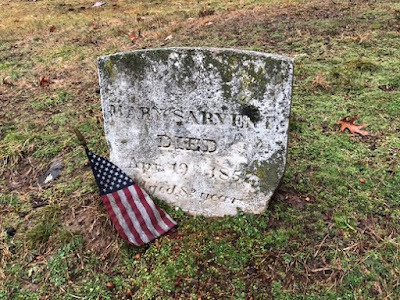
BLACK GRAVEYARD
HIDDEN IN
NEW YORK CAR PARK
G'day folks,
An historic Black graveyard is hidden in the parking lot of one of America's largest malls.The hulking Palisades Mall is among the largest “mega malls” in the United States. The vast concrete complex opened in 1998, swiftly becoming known as one of the ugliest malls in the country. Described by the New York Times as a, “series of interlocking coffins…lacking any discernible architectural theme,” the mall would be grim enough itself, were it not for the fact that there’s a small, historic cemetery lying largely unnoticed in the parking lot.
Around 20 million shoppers descend on the Palisades Mall every year, most of whom probably have no idea they’re passing by Mount Moor Cemetery, a Black graveyard listed on the National Register for Historic Places that lies dwarfed in the shadow of the Target parking lot and a Dick’s Sporting Goods.
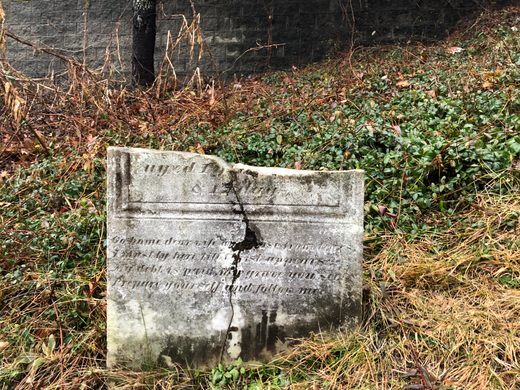
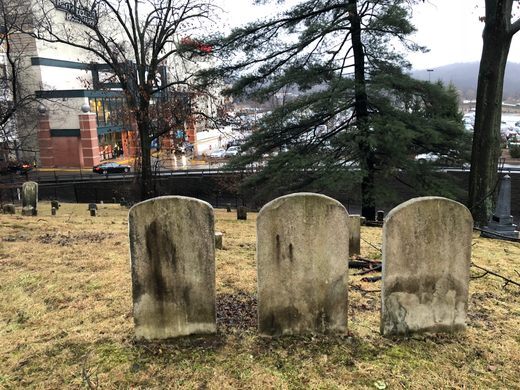
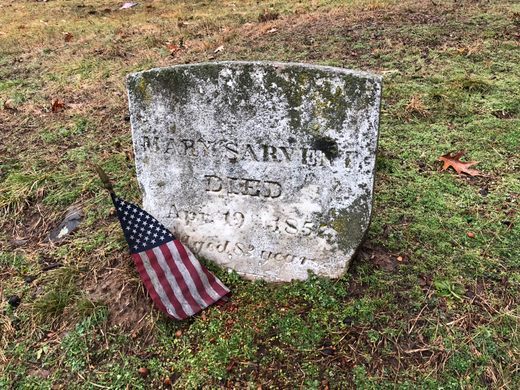
Mount Moor was deeded in July, 1849, as a “burying ground for colored people.” The sloping hill is the final resting place for around 90 Black Americans, including veterans of the Civil War, the Spanish-American War, the two World Wars and the Korean War.
The rise of the mega mall saw many family-run stores that been had been around for generations lost for good. The landscape and social history of many small towns were paved over to make way for these concrete cathedrals to consumer capitalism. And Mount Moor,, bounded by the New York State Thruway and Routes 59 and 303, soon fell under the greedy eyes of property developers.
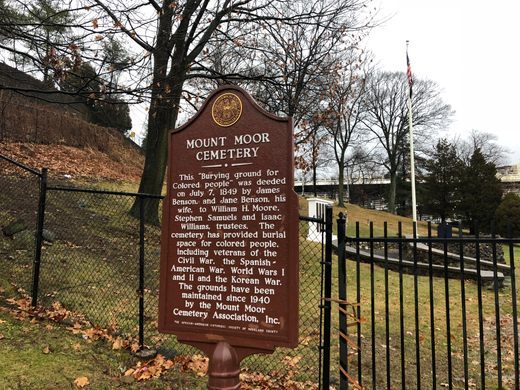
When Syracuse-based Pyramid Companies announced its intention to build one of the largest malls in America, it found the small, historic cemetery right in the middle of their plans. Offers to have the graves disinterred and relocated to another cemetery were swiftly met with short shrift. A reported offer of $100,000 to sell the cemetery was rejected by the Mount Moor Cemetery Association, who work doggedly to preserve and take care of the historic site.
The property developers were forced to build their colossus around the tiny cemetery, which today can still be found on the sloping ground overlooking the car park. It is cared for diligently by members of the association and the descendants of those buried there.
One particular grave belongs to Lafayette Logan, who fought in the Civil War with the Massachusetts 54th Regiment, the first Black regiment mustered by the North. Immortalized in the 1989 Academy award winning film Glory, he perhaps deserves more a dignified final resting place than in the shadow of a giant Bed Bath & Beyond.
5 January 2023 - MASS GRAVES FOR 1928 HURRICANE VICTIMS - FLORIDA
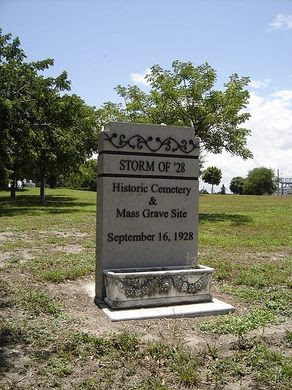
MASS GRAVES FOR 1928
HURRICANE VICTIMS
- FLORIDA -
G'day folks,
This mass grave for victims of a massive hurricane remained hidden until 1991.When a hurricane struck the Florida coast in September 1928, it caused a dike on Lake Okeechobee to fail which resulted in an extensive loss of human life.
Of the victims in Palm Beach County, most of the White victims were buried in a mass grave in the prestigious Woodlawn Cemetery. However, segregation laws at the time prevented the burial of Black residents in that cemetery. More than 600 people of color were interred in a mass grave at the Paupers Graveyard at the corner of Tamarind Avenue and 25th Street.
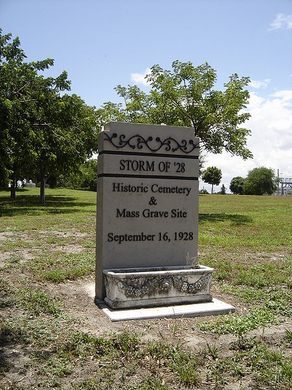
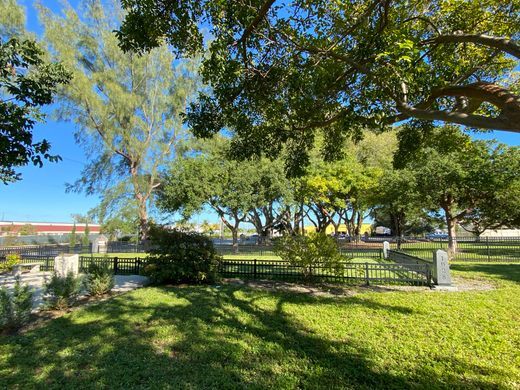
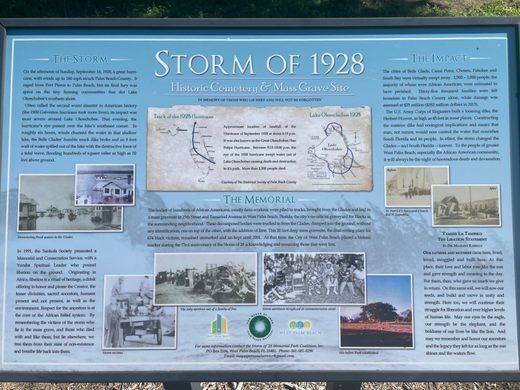
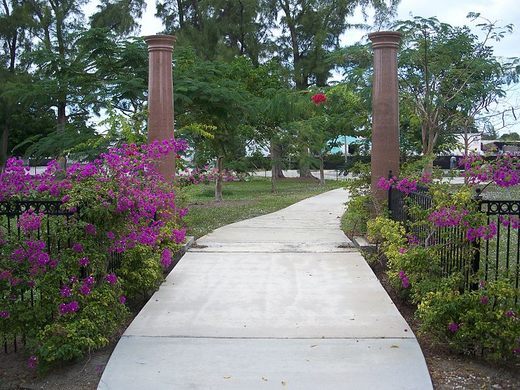
While the mass grave at Woodlawn was marked with a memorial, the Tamarind Avenue site was largely forgotten until 1991, when a Nigerian religious service was held at the location. The site had passed through various owners over the years and was used as a garbage dump, slaughterhouse, and sewage treatment works.
The City of West Palm Beach purchased the land in 2000, and in 2003, a state historical marker was put in place by the city for the 75th anniversary of the storm.
October 2, 2022
30 December 2022 - IRRIGATION CHANELS BUILT INTO MOUNTAINS
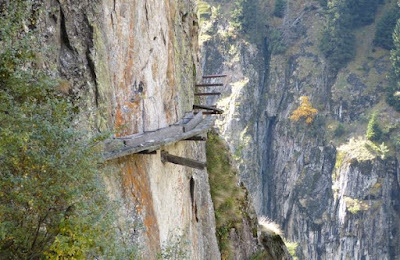
IRRIGATION CHANELS
BUILT INTO MOUNTAINS
G'day folks,
Medieval irrigation channels built into the sides of mountains provided Valais with water for hundreds of years.Some of the best places to hike in the state of Valais in Switzerland are ancient pathways that once used to bring water down from mountain streams to farms in the valleys and meadows below.

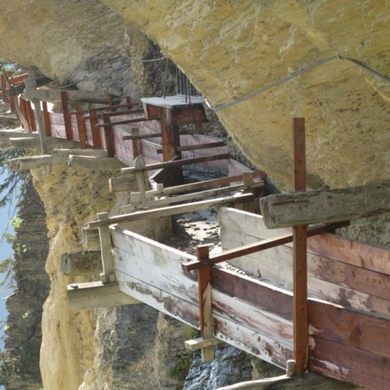
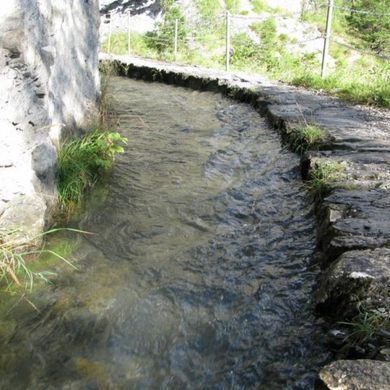
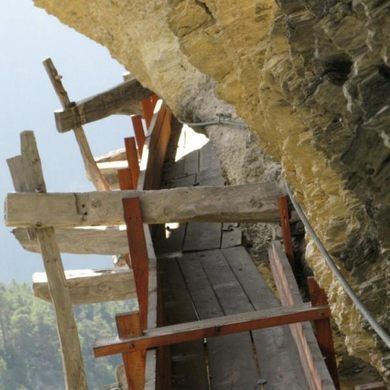
The creation of these channels, known as bisses, goes back at least as far as the 14th century, though some believe those medieval routes were built where Roman channels had previously been. In the aftermath of the Black Death in the mid-1300s, with a significantly reduced population across Europe, the grain fields in Valais were repurposed to grow hay to raise cattle for the rising demand of beef across the border in Italy.
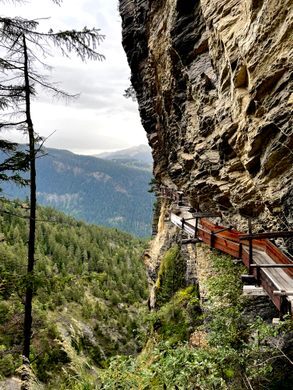

Owners of the fields and pastures pooled their resources to build bisses for irrigation, which was more necessary than it had been for growing grain. A lot of resources were needed, since many of the bisses were built into the sides of mountains and cliffs, which made digging them particularly dangerous hundreds of years ago. They tended to be between 5 and 10 kilometers, though a few stretched more than 20 kilometers.
Over time, they came to be used by vineyards and orchards in the area as well. Those more wealthy landowners, who controlled the water supply, arranged for systems allowing the use of the water by the smaller farmers. The smaller farmers and their families, in turn, helped maintain the bisses, cleaning and repairing them every spring. Canal guards, who lived in cabins along the channels, kept regular watch over the flow of water, making sure it was not interrupted.
For the most part, the bisses that remain have become scenic tourist attractions and inspired hiking trails, though some are still in use. Some of the trails run alongside the bisses, but others are the bisses themselves, repaired and reinforced. Le Musée des Bisses offers a convenient itinerary of some of the most spectacular bisse-adjacent trails, the bisse of Sion, the bisse ‘Ayent, and the Bitailla, in addition to exhibits on the history of the Valais bisses.
September 30, 2022
29 December 2022 - THE AMAZING TATACOA DESERT - COLOMBIA
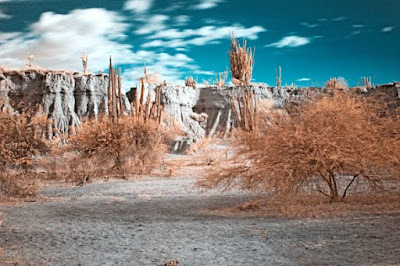
THE AMAZING
TATACOA DESERT
- COLOMBIA -
G'day folks,
Unparalleled stargazing, one of Colombia's best observatories, and a swimming pool can all be found in the middle of this ancient tropical forest.If Ray Bradbury would have traveled to the Tatacoa Desert, his “Martian Chronicles” would have been shaped by this otherworldly landscape.
Covering a large area around the small town of Villavieja in the department of El Huila, the Tatacoa is home to one of the most important observatories on the continent. Its expansive land is not covered with dunes, as could be expected, but rather with rocky canyons that form dry labyrinths whose red and grey colors are interrupted by the occasional green bush.


Its unique landscape is explained by the misnomer that characterizes it: The truth is, the Tatacoa Desert is not a desert at all, but a dry tropical forest. Millions of years ago, it was a lush forest full of vegetation and animals. Today, earth and rock stand where trees and flowers once stood, contrasting the ever-present Andes mountains that stand in the distance. The landscape is divided into two areas: Cuzco, tinted in a deep ochre; and Los Hoyos, colored in an ashy grey.

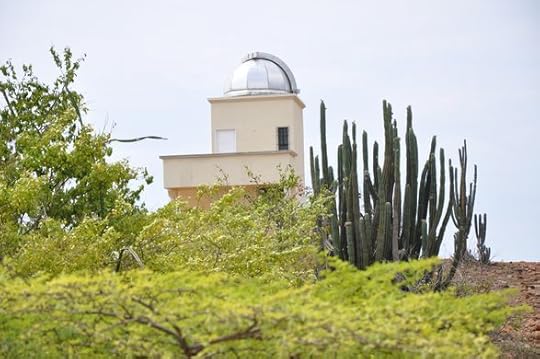
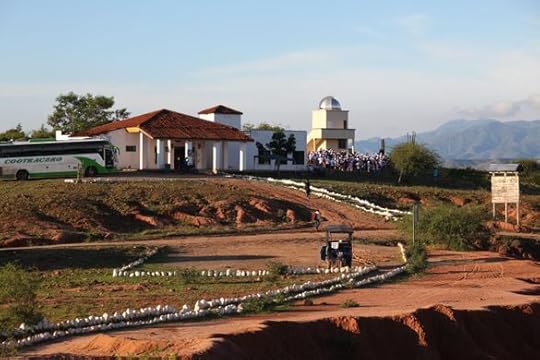

Along the main road that cuts through it is one of the most important observatories in the country. Though small, the observatory boasts thousands of visitors throughout the year, and a team of knowledgeable astronomers who share their enthusiasm. Each night, it opens its doors to visitors, who go up to its roof and spend around two hours gazing at the sky and learning everything from the history of the names of constellations to how distance is measured. The highlight of the evening is, of course, getting to use the telescopes to feel closer to the stars.
As the second largest arid area in Colombia, the Tatacoa is one of the most popular places for camping and geological excursions. Most people who head to the Tatacoa plan to walk into the loneliness of the canyons and find a place to set up camp. Isolated from the noise of other people, it is here that they do the best star-gazing.
Perhaps the most incongruous sight in the ochre landscape is the aqua blue swimming pool set into the dry rolling landscape. Hostels run by the few families that inhabit the area also offer beds and hammocks for those who want to see the desert without venturing out into its maze. Regardless of their preference, most travelers end up at The Pool at some point. An unlikely oasis, this man-made pool is filled with natural water springing from the desert. Beer runs aplenty, and the coolness of the water is deliciously refreshing.
September 29, 2022
23 December 2022 - FALL CREEK FALLS - IDAHO
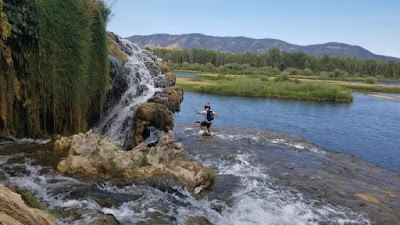
FALL CREEK FALLS
- IDAHO -
G'day folks,
A creek tumbles over a series of step-like rocks to create this scenic water feature in Idaho.This little gem in Idaho feels like it came out of a movie or was designed as a theme park attraction, but it is a beautiful natural wonder. A small creek tumbles down step-like cliffs overlooking the Snake River as it meanders through the beautiful Swan Valley. The cascading waterfall creates several mossy veiled grottos, where adventurers can wade into small chambers and watch the water droplets shimmer down. You can also relax in the shallow sitting pools in front of the caves and gaze out over the scenery.
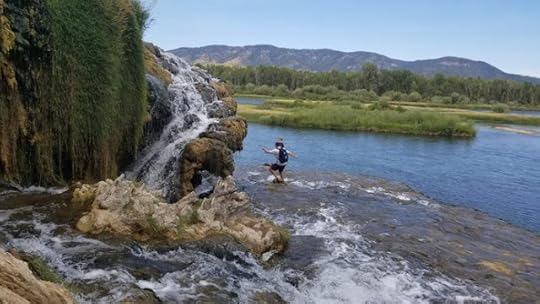
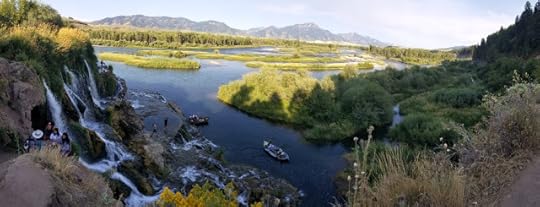
Getting to the waterfall is its own journey. While hikers can climb down the falls from the top, further down the road is a rope path where you scuttle down a steep embankment of red earth. Some teamwork is helpful going up and down the rope. At the base of the embankment, the grass and reeds grow widely. Above the soft mud cliffs, birds have carved out holes for their homes.
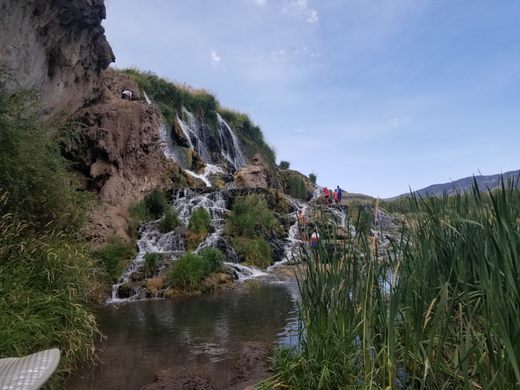
The falls can also be accessed by boat, as the river is deep enough at the base to moor a small vessel, but shallow enough to wade across and begin climbing the falls. There are places upriver to put in your craft, and a boat ramp (with bathrooms) at the Highway 26 bridge not far downstream. There is a campground just up the road for an overnight stay, but day adventurers can just park on the edge of the road near the falls.
September 26, 2022
28 December 2022 - BRIM SILO MURALS - AUSTRALIA
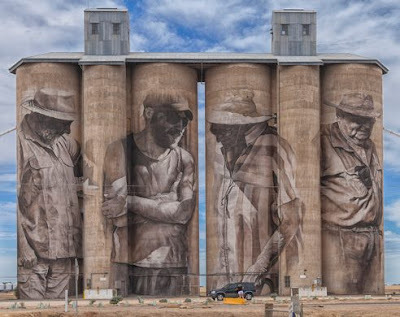
BRIM SILO MURALS
- AUSTRALIA -
G'day folks,
These giant grain silo portraits capture elements of rural life in Australia.This project started as a happy confluence of needs. Street artist Guido van Helten was looking for a large-scale canvas, and the rural county of Yarriambiack Shire was searching for a beautification project.
Large-scale murals can be tricky to coordinate, so the county worked with van Helten to select a location along a rural crossroads in Brim. Yarriambiack Shire coordinated with the Grain Corp to use four of their silos as canvases for the project.
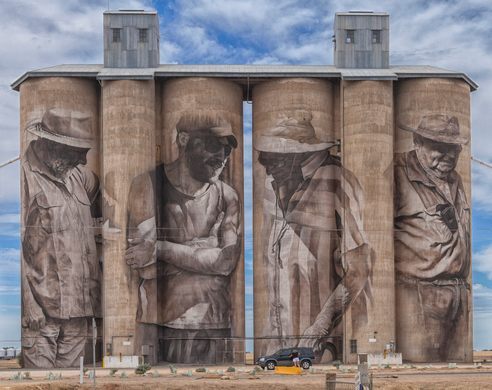
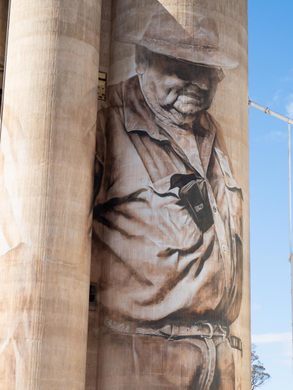

Before selecting his subjects, van Helten lived in the area for a few months getting to know the community. He then painted four tender portraits featuring several generations of local farmers. They were painted in a very detailed fashion, with a soft style that accentuated the wrinkles on their clothing and in their faces.
This resulted in a stunning work of art that looms over the beige landscape. The mural became so popular that Yarriambiack Shire commissioned five additional murals from various artists. They are now spread over 124 miles (200 kilometers) of rural roads. They have become known as the Silo Art Trail.
September 24, 2022
31 December 2022 - CRYSTAL SPRINGS RHODODENDRON GARDENS, PORTLAND
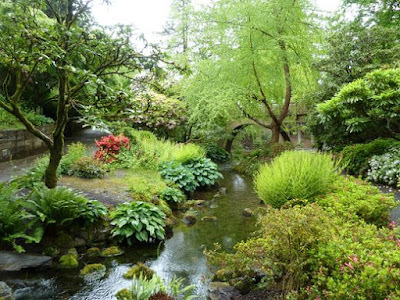
CRYSTAL SPRINGS
RHODODENDRON GARDENS
- PORTLAND -
G'day folks,
Nestled between a college and a golf course, this garden is home to more than 2,500 rhododendrons.Crystal Springs Rhododendron Garden started as an idea of a rhododendron garden. Sam Jackson, a Portland local who owned the Oregon Journal, donated 27 acres for the garden on a site near Terwilliger Boulevard. But the land turned out to be too steep and rocky. The garden was moved to a site once known as Shakespearean Island, due to its history as an outdoor stage for Reed College students performing the works of the bard. Though less steep than the former site, Shakespearean Island was overgrown, dense with brush and blackberries that were cleaned up by volunteers. Crystal Springs held its first rhododendron show in 1956 and became an official garden in 1964.
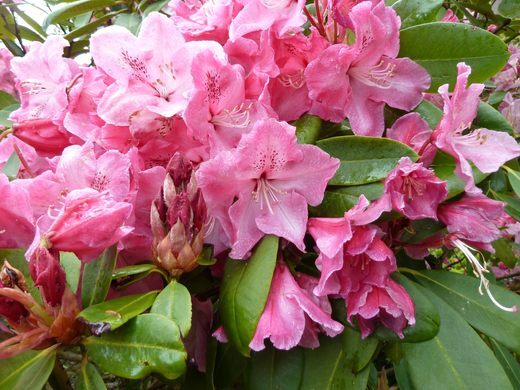
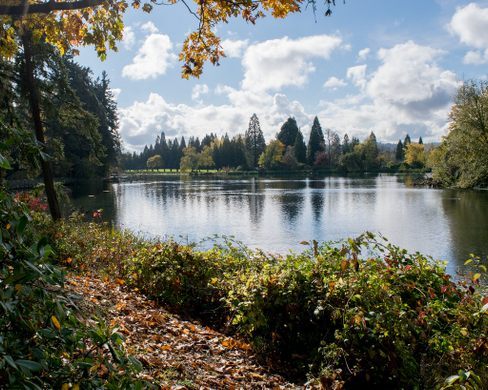

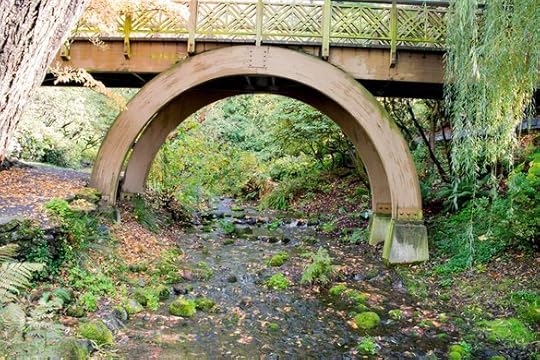
Today, the garden is lush and sprawling, with more than 2,500 rhododendrons and other plants. Spurting fountains and meandering trails diversify the many ways to see the flowers. To some in Portland, the garden remains a secret—overshadowed by the city’s famous International Rose Test Garden, which was constructed during World War I to save and cultivate different kinds of European roses. Surrounded by the waters of Crystal Lake, the garden also serves as a waterfowl refuge. Ducks and geese frolic in the lake, and red-winged blackbirds and scrub jays perch in the trees.
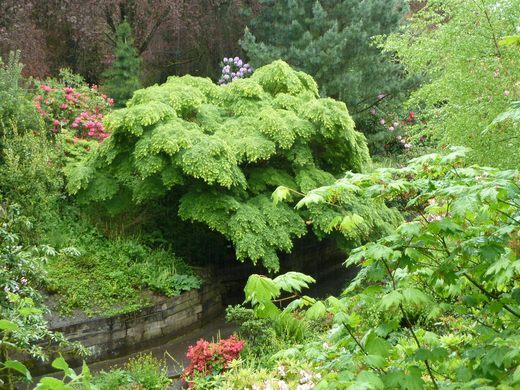

Twice a year, the Crystal Springs Rhododendron Garden hosts free flower shows. At the Rhododendron & Daffodil Show in April and the Mother’s Day Show in May—peak blooming time for rhododendrons—local gardeners pit their flowers against each other in a showcase.
September 20, 2022
16 December 2022 - THE SPIDER MONKEYS of TIKAL, GUATEMALA
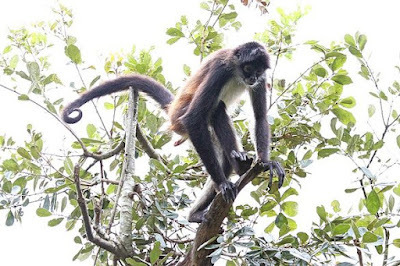
THE SPIDER MONKEYS
of
TIKAL, GUATEMALA
G'day folks,
Monkeys inhabit the lush forest surrounding ancient Mayan ruins once considered sacred.Visiting the sprawling ruins of the Mayan city of Tikal makes for an eerie and timely lesson on the fragility of human societies. Here the most powerful civilization of Mesoamerica ruled supreme before its mysterious collapse and the encroachment of the forest. But a denizen of the jungle that has witnessed the rise and fall of the ancient Maya still lingers on.
These are a primate known as Geoffrey’s spider monkey, a species that is native to the rainforests of Mexico, Central America, and parts of northern Colombia. One of the largest New World primates, they live in troops of between 20 to 40 individuals and feed upon the ripe fruit and leaves provided by the many tree species of the forests. In turn, the seeds are dispersed over vast distances by the monkeys, who are one of the many animals that ensure the forest’s growth.


This remarkable animal may be observed easily by visitors at Tikal, as it brachiates through the liana laden boughs of the great ceiba trees with a grace that would make even the most talented circus acrobat jealous. The monkeys possess a prehensile tail which has evolved to serve as a dexterous fifth limb, and which is used with remarkable agility in locomotion across the canopies.
In the Mayan civilization, the monkey was considered a divine animal imbued with profound cultural significance. Although the Mayans held no concept of the scientific theory of evolution as it is currently understood, they conceived of monkeys as being the venerable ancestors of humankind. The sacred book of creation myths, the Popol Vuh, related that primates were a lifeform that had arisen during one of the many earlier experimental periods of creation by the gods.
According to the myth, the gods were ultimately disappointed with the result, which they found to be too frivolous and rebellious and thus strove to perfect and shape the form of some of the monkeys. In the process of the modification and reshaping, the gods managed to create the human race, and feeling content with their invention gave this “primate 2.0” permission to rule the Earth. As the forerunner of the human race, the monkey, therefore, was perceived to occupy a semi-sacred role within the complex cosmovision of the Mayans.
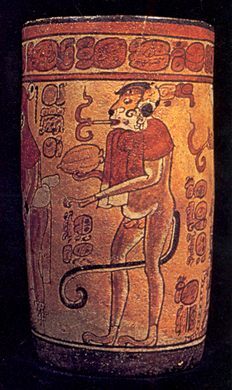
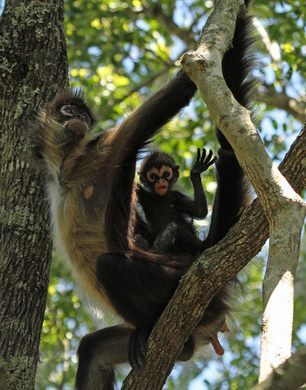
The two types of monkey that inhabit the forests of northern Central America, the howler monkey and the spider monkey, were seen to represent different aspects of the divine. The howler monkey (known as “Batz” in the Mayan language), due to its more somber and reserved appearance, was connected with seriousness, duty, and work, and therefore associated with scribes. The more active, intelligent, and mischevious spider monkey (or “Ma’ax” as it is known in Mayan) meanwhile was associated in a “Joie de vivre” manner with the affirmation of life, joy, celebrations, creativity, sexuality, and pranks.
Today the spider monkey is an endangered species across much of its range. It has vanished from many of the regions in Central America where it was once abundant as the rainforests are felled for timber and are replaced by farmland. Fortunately, however, in Guatemala’s Tikal National Park, at least for the time being, this sacred simian continues to cling to survival, as it has done for thousands of years.
September 19, 2022
15 December 2022 - PLAYING ON THE ROOF IN MASULEH, IRAN
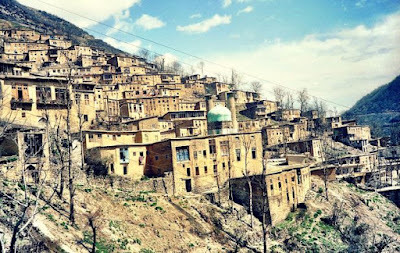
PLAYING ON THE ROOF
IN MASULEH, IRAN
G'day folks,
In this tiny Iranian town playing on the roof isn't just encouraged, it's the only place to go.Built right into the slope of an Iranian mountain, the small town of Masuleh has a unique, purpose-built architectural style where the front yard of each of the houses on the incline is actually the roof of the house below it, with roof-lawns trickling down to the base of the mountain.


The tiny village has existed in the area for around 1,000 years and the strange stacked building tradition seems to have existed nearly the entire time. Looking almost like a clay-covered rendition of Brazil’s cramped favelas in Sao Paulo and Rio de Janiero, the communities of Masuleh make much better use of the space. Atop the roofs of many of the cascading houses, lawns have been planted and other traditional yard fixtures have been laid out by the tenant above who in turn is covered by the front yard of their upstairs neighbor, and so on.
So tightly packed are the buildings that there is only room for a maze-like network of stairs and narrow roads connecting each of the structures. In fact automobiles are not allowed in Masuleh simply because there is no room for them.

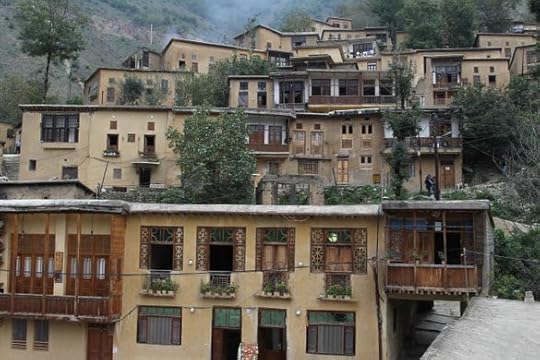

The landscape surrounding Masuleh is lush and mountainous with a frequent covering of dense fog, so much so that many of the homes in the town are covered in bright yellow clay so they can be seen better through the haze. The natural beauty of the area attracts a number of visitors each year, but the town’s impromptu yard scheme doesn’t hurt.
September 13, 2022
6 December 2022 - WHERE THE DEAD SEA SCROLLS WERE FOUND
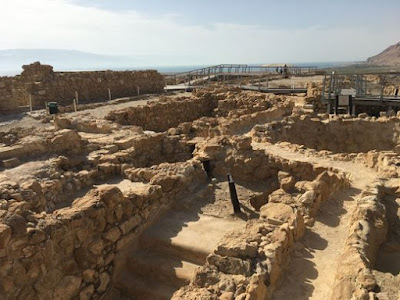
WHERE THE DEAD SEA
SCROLLS WERE FOUND
G'day folks,
The Dead Sea Scrolls were discovered in the ruins of this ancient monastic community.The story of Qumran began in the second century BC when the Essenes settled in this remote spot near the Dead Sea. The Essenes were an all-male Jewish sect that lived in Israel from the 2nd century BC until the fall of the second temple in 70. They lived a monastic life, and strictly observed the rules of Moses as they were written in the Torah.
It is thought that about 200 people lived in Qumran, sharing meals, studying scripture and keeping their own calendar. The Romans conquered Qumran in 68, destroyed it, and the Essenes dispersed, leaving the ruins largely abandoned for almost 2,000 years.
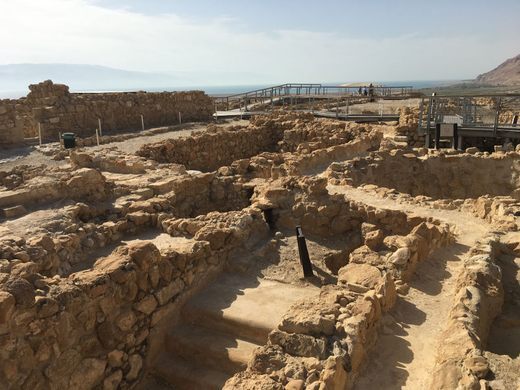
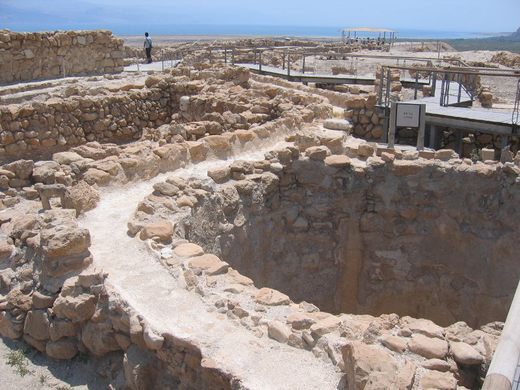
In 1947, Bedouins came across several ancient scrolls stored in jars inside a cave in the desert near Qumran, which was the beginning of a significant discovery. Archeologists began to explore the area and between 1947 and 1956 found a total of 20 complete scrolls and some 16,000 fragments of manuscripts spread across 12 caves. The scrolls found include books from the Hebrew Bible, non-biblical religious texts, and detailed descriptions of the daily life of the Essenes people. Today, the collection is widely known as the Dead Sea Scrolls.
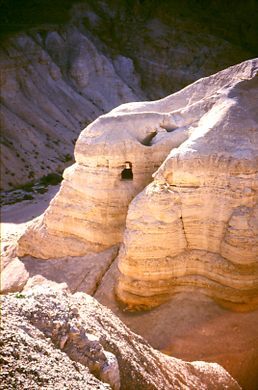

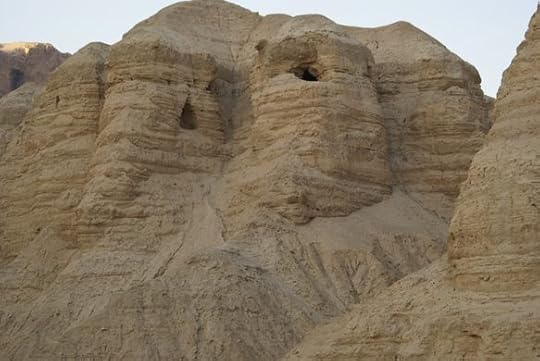
A visit to the Qumran National Park gives us a peek into this mysterious historical story. Thanks to the arid climate of the Dead Sea Valley, the ruins of Qumran village were very well preserved. The complex includes remnants of an aqueduct, water reservoirs, kitchens, a watch tower, and a gathering hall. There is a museum at the site that houses archeological finds from excavations at the site. The caves can be viewed from an observation deck, but the entrance to the caves is not permitted to the public.



